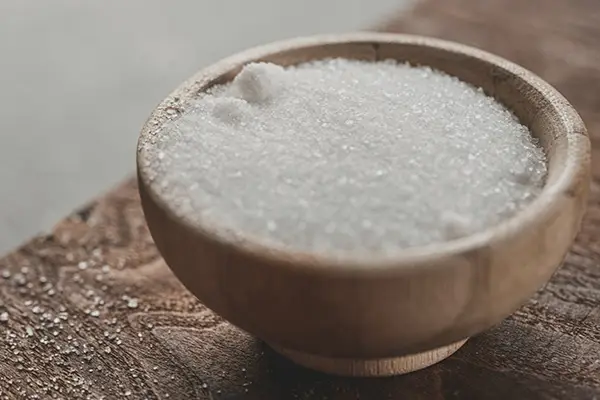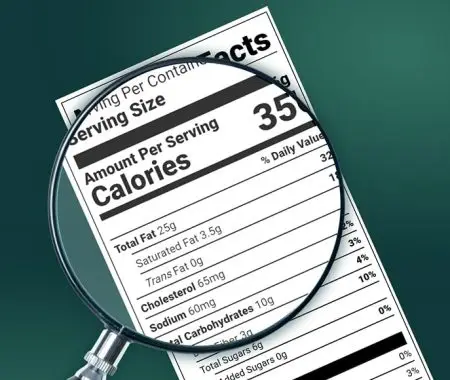If you run a food and beverage enterprise in Canada, you already understand the importance of compliance with labeling regulatory changes, especially regarding sugar. In July 2022, Health Canada introduced a Front-of-package nutrition symbol requirement on foods high on one or more nutrients: saturated fat, sodium, and sugars. The food industry has up to January 1, 2026, to make this change.
The Canadian Food Inspection Agency (CFIA) has also introduced new changes related to sugar labeling on Canadian packaging. As a manufacturer, you will be required to group sugar-based ingredients after the term “Sugars” in the list of ingredients. Enabling the new regulations and incorporating feedback will help consumers make informed decisions. Complying with these changes will keep you on the right side of the law and contribute to the greater effort of promoting healthier eating and addressing concerns related to the consumption of processed foods and their impact on public health.
TLDR
- New Daily Value: Health Canada sets the total sugars Daily Value at 100 grams, based on a 2,000-calorie diet, to align with a healthy eating pattern.
- Consumer Guidance: The % Daily Value for sugars on labels helps consumers compare sugar content across foods and gauge the amount relative to their total daily intake.
- Business Adjustments: Food and beverage companies must revisit product formulations and labels to meet new sugar guidelines, potentially altering recipes to reduce sugar content.
- Ingredient Grouping: New labeling rules require sugars-based ingredients to be grouped under the term “Sugars,” with specific categories like monosaccharides, disaccharides, sweetening agents, and functional substitutes.
- Software Solutions: Tools like Food Label Maker simplify the label update process, ensuring compliance with CFIA sugar labeling requirements efficiently.
- Label Update Steps: The process includes reviewing current labels, determining sugar content, updating the nutrition facts panel, and adjusting serving sizes if necessary.
- Consumer Transparency: Adapting to these changes enhances label clarity and helps consumers make informed dietary choices, maintaining compliance and fostering trust.
Understanding the New Daily Value for Sugars
The 100 grams total sugars Daily Value is based on 20% of a 2,000-calorie diet. According to Health Canada, this value shows the total sugars consistent with a healthy eating pattern, but it is not the recommended intake level.
Providing your consumers with the % Daily Value for sugars will help them to compare the sugar content per serving across different foods, and they will also understand the relative amount of sugars in relation to the total daily consumption. For example, if something exceeds 15% of the daily sugar value, it’s like a little red flag, prompting your consumers to think twice before indulging too much.
See How FoodLabelMaker Can Help You
Implications for Food and Beverage Enterprises
For businesses, these new changes mean you must readjust your product formulations and labels to comply with the regulations. This implies that sometimes, you’ll have to change the recipes a bit to keep in line with the new sugar guidelines.
The important thing is finding that middle ground between taste and compliance. You would also need to look closer at your product lineup to see if anything’s tipping the scales on sugar content. If a particular product is creeping above the 15% mark, you will need to determine how you can dial it back or provide the customers with more context on the label.
Grouping Sugars-Based Ingredients in the Ingredients List
The new requirements dictate that each sugars-based ingredient must be grouped after the term “Sugars” in a prepackaged product. As a manufacturer, you must provide evidence of your approach to identifying sugars-based ingredients for CFIA verification.
Some of the groupings of sugar-based ingredients include:
- Monosaccharides – These consist of simple sugars with one sugar unit, including glucose, fructose, and galactose. They occur naturally in things like milk, honey, and fruits.
- Disaccharides – These are compound sugars that contain two sugar units. These include sucrose, lactose, and maltose. They are created by combining two monosaccharides. Sucrose is the most well-known and common type, extracted from sugarcane or sugar beet. You find lactose in milk and dairy products, while maltose is created when grain starch breaks down.
- Sweetening agents – These are ingredients added to foods or beverages to make them sweeter. They include brown rice syrup, corn syrup, agave syrup, sorghum syrup, dextrose, etc. They may have different chemical structures and nutritional values than naturally occurring sugars.
- Functional substitutes – As the name implies, these are ingredients containing sugars, added to foods or beverages as a substitute for a sweetening agent. They could have additional properties that impact texture, color, flavor, or shelf life. Some examples include malted milk, fruit paste, fruit juice, condensed milk, molasses, etc.
Compliance Without Complexity: Leveraging Software Solutions
Gone are the days of slogging through label updates manually. You don’t want to leave anything to chance regarding compliance with CFIA sugar labeling requirements. With our software at Food Label Maker, all you’ll have to do is enter the ingredients, assemble them into recipes, and easily print out your labels. The software makes it possible to automate this process by grouping the sugars once you’ve inputted the recipe as well as list them in descending order of weight in a quick/affordable way.
Practical Steps for Updating Product Labels
If you hire one of our experts, these are the steps they will follow. Here’s a step-by-step guide on how we’ll update your product labels so they reflect the new sugar information:
- Review current labels
We will examine your current labels to identify areas that need updates for the new sugar regulations.
- Determine sugar content
Next, we’ll calculate the sugar content for each product against the % Daily Value for sugars and help you list sugars-based ingredients properly.
- Update nutrition facts panel
We’ll revise your labels’ nutrition facts panel section to reflect the updated sugar content accurately and clearly.
- Adjust serving sizes
We will verify that the listed serving services are in line with the new sugar information, and should the need arise, we can adjust it to reflect the actual amount of sugar that the customer consumes per serving.
*Note that the software will automatically complete steps 2 and 3 – then group the sugars together and list them in descending order of weight on the ingredient statement list.
Regarding adapting your new label from Food Label Maker, we do all of this for you so that you can focus on your own operations. Once you have input your recipe and the nutrition analysis is complete, the label is displayed in line with CFIA regulations automatically with the ingredient statement list and you can change it to the different regulatory-compliant label styles available based on your needs
Conclusion: Embracing the Changes for Better Consumer Transparency
By embracing these changes, you’ll stay compliant and give your customers the transparency they deserve. You will be arming your consumers with all the tools to make informed decisions when they pick up your product. The regulatory landscape is always changing, but with the right mindset and tools like those offered by Food Label Maker, you’re now prepared to tackle anything that comes your way.



